8 Tips for Better Posture When You Don’t Have a Desk
Advice to improve your movement, fitness, and overall health from the world's #1 in orthopedics.
People all around the world are finding themselves unexpectedly working from home, but many of us don’t have a proper home office setup. Jon Cinkay, a physical therapist and coordinator for body mechanics at Hospital for Special Surgery, has some important tips for keeping proper posture and preventing injury and strain, even when you don’t have a desk.
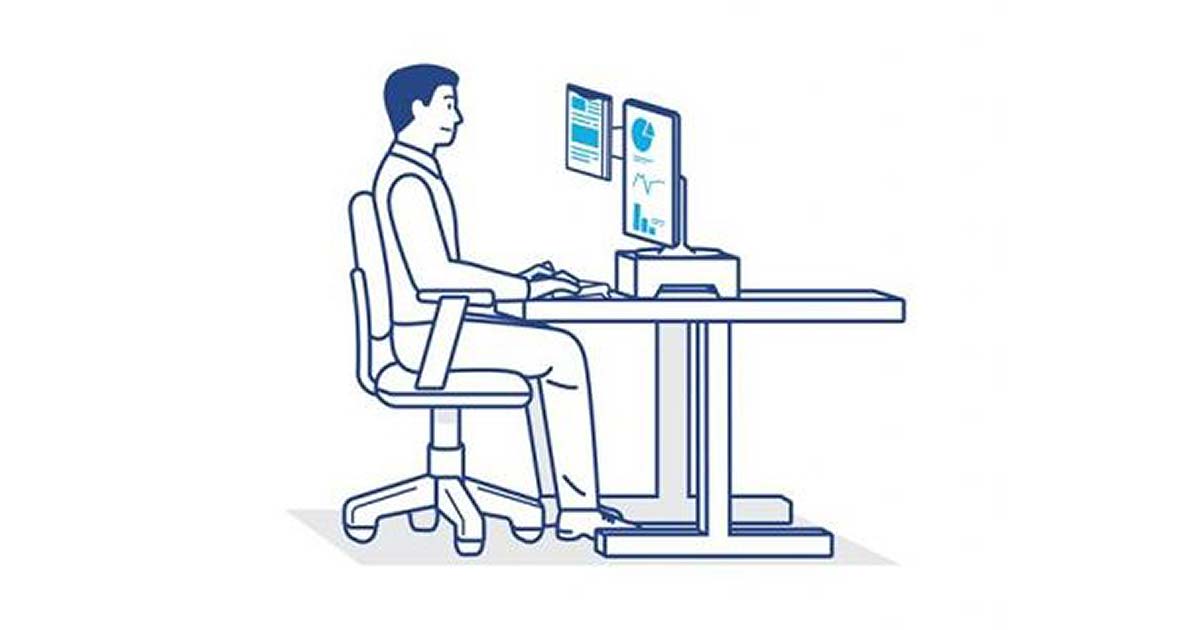
- Listen to your body.
Whether you’re working from a desk, table, couch or bed, you should never feel strain or discomfort. Your body will tell you when something doesn’t feel right. Sometimes just a tiny adjustment will make a big difference.
- Be conscious of your posture.
After 15 minutes of sitting or standing in the same place, most people start to slouch. Check in with yourself often to feel how your body is positioned and readjust if you need to.
- Get up and move around often.
Even if you’re comfortable, you should never sit in one position for more than an hour. Getting up and moving around every 30 to 40 minutes is recommended. It also reminds you to reset your posture when you go back to work.
- Keep everything you need to work within arm’s reach.
Things like your phone and a pen and paper should be close enough that you can grab them without having to strain.
- Look down with your eyes, not your neck.
When working on a laptop or phone, most people tilt their heads forward toward their device. Think about avoiding wasted movement, including constantly moving your head up and down.
- Use a phone headset.
If you don’t have a headset or headphones, use your phone’s speaker function if you’re working in a quiet space and won’t disturb other people. If you have to hold your phone to your ear, hold it with your nondominant hand so you can write with your other one. Never use your shoulder to hold your phone against your ear.
- Stay hydrated.
This also encourages you to get up frequently, whether you are refilling your drink or going to the bathroom.
- Take breaks to stretch.
Stretching can help you loosen any muscles that you may be unconsciously tensing up. It can also help you reset your posture.
No matter where you’re working, you can make your workspace body friendly. The diagrams below show how to make your desk, kitchen counter or table, bed and couch more comfortable for working at home.
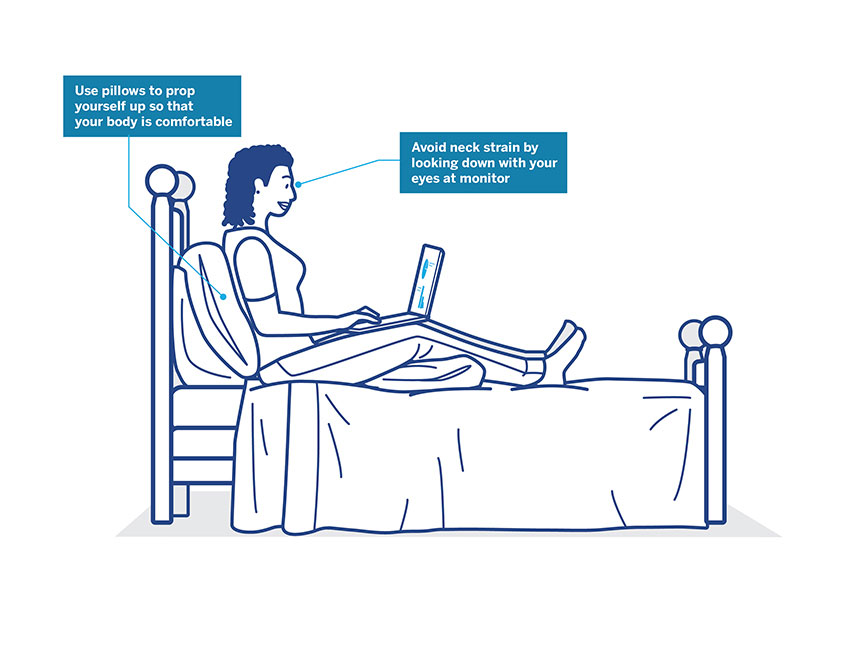
Working in bed
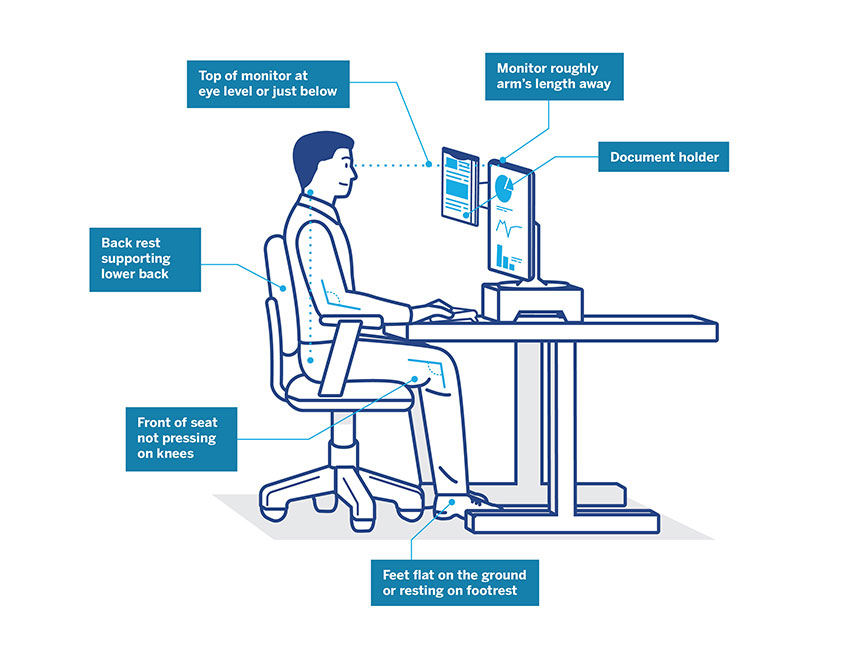
Working at a desk
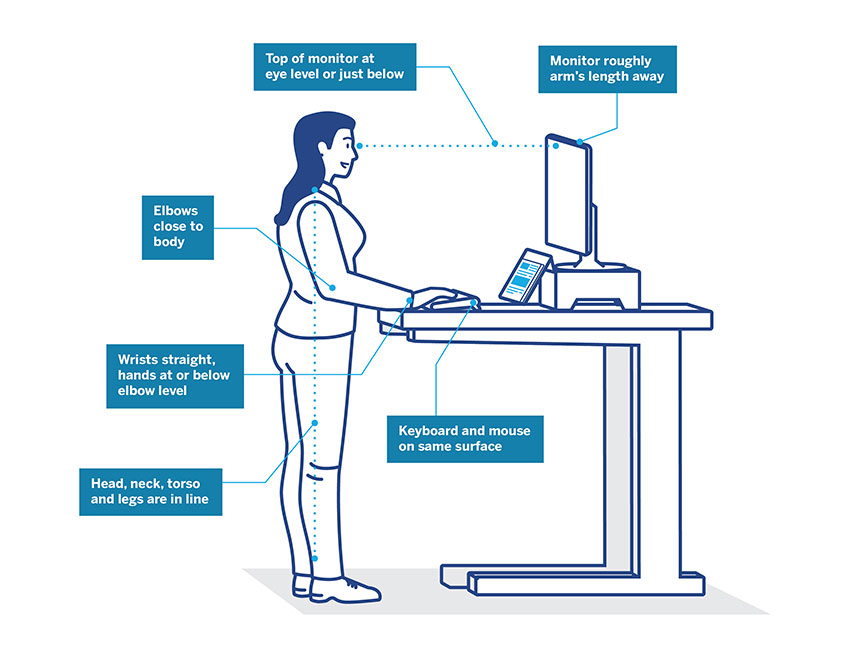
Working at a standing desk
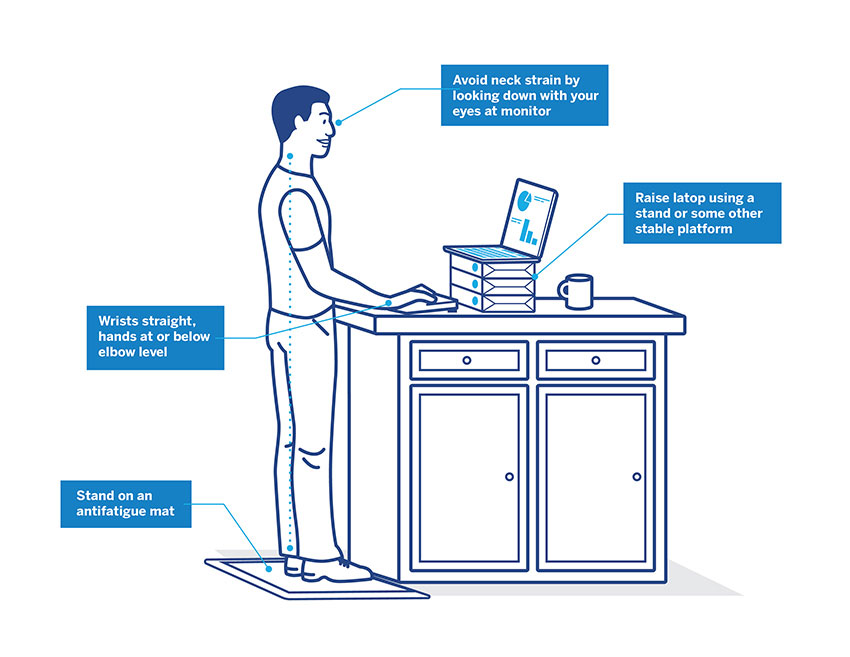
Working at a kitchen counter
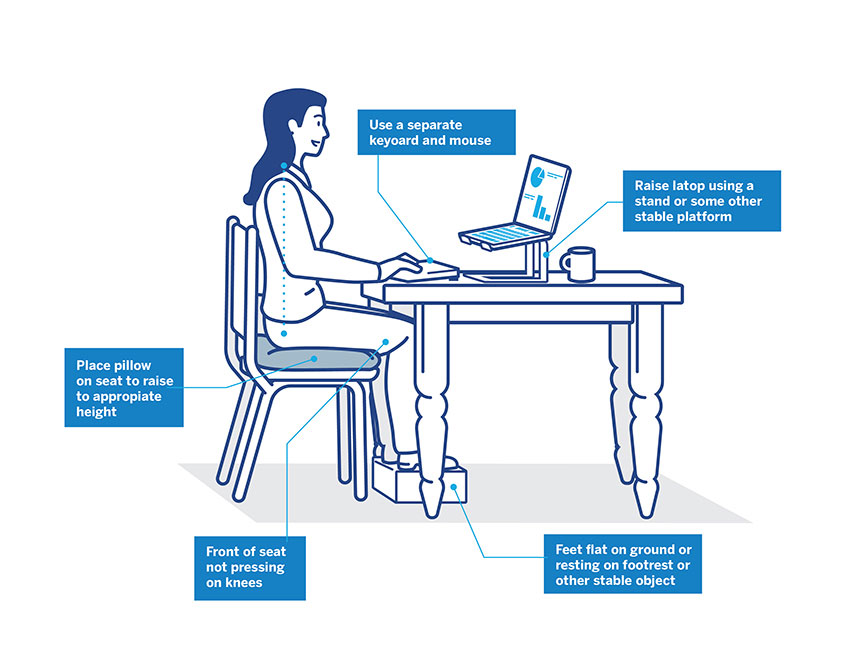
Working at a table
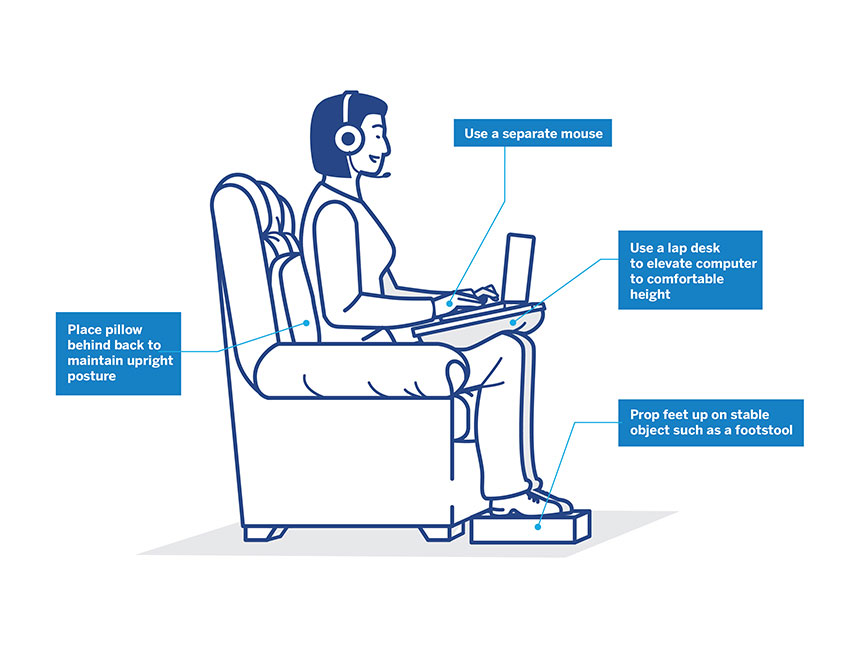
Working in a recliner
Updated 12/2/2020





